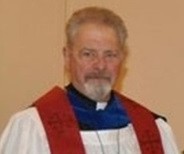 When Martin Luther posted his 95 theses on the door of the University Chapel where he worked, he was simply trying to start a discussion that he hoped would result in some minor modifications in how the Church was run. Even then, while today we think of it as “drawing a line in the sand” between himself and the Pope, it was not Luther’s idea to start a new Church. In fact, it was not until 1721 that the then-sitting Pope, Leo X, excommunicated him and declared him a heretic. After that, things moved quickly in Germany, with most of the German states (and there were almost three hundred, in those days; Germany had not yet unified) coming down on one side or the other. Nor, was it long before Luther’s ideas began to spread outside Germany.
When Martin Luther posted his 95 theses on the door of the University Chapel where he worked, he was simply trying to start a discussion that he hoped would result in some minor modifications in how the Church was run. Even then, while today we think of it as “drawing a line in the sand” between himself and the Pope, it was not Luther’s idea to start a new Church. In fact, it was not until 1721 that the then-sitting Pope, Leo X, excommunicated him and declared him a heretic. After that, things moved quickly in Germany, with most of the German states (and there were almost three hundred, in those days; Germany had not yet unified) coming down on one side or the other. Nor, was it long before Luther’s ideas began to spread outside Germany.
A French man named John Calvin was living in Switzerland, at the time. Actually, he was living in the “Free City” of Geneva, for Switzerland as we know it had not yet become unified, either, but Geneva is in Switzerland, and you get the idea. Calvin had already begun to have some ideas that were much like Luther’s. Indeed, the city of Geneva had already largely embraced a Luther-style Reformation before Calvin came on the scene. But, come, he did, and in 1536 he published his ideas (some like Luther’s; some quite different) in a book called “Institutes”. Calvin, like Luther, had no idea of establishing a “new” Church, but simply wanted to “clean up” the old, Catholic one.
Calvin, like Luther, was an educated man. Calvin was a lawyer, whereas Luther was a Theologian. Both men had an extensive academic background in the ancient languages. Both based their reform ideas on returning the Church to ancient forms. But, while most of Luther’s followers were Germans, Calvin’s came from all over the place: France, Holland, England, Scotland, and so forth.
In a like manner, while most Lutherans stayed pretty close to Luther’s own ideas, over the years, Calvin’s took reform in directions that nobody could have predicted. Nor, did Calvin’s followers generally call themselves “Calvinist”. Most, at least in the early days, called themselves “reformist”, but it was much more a case of similar ideas than similar practices; again, very different from the direction that Lutherans took.
While it must never be forgotten that Luther and Calvin defined the Reformation, it must also be remembered that there were other streams of reform going on, and some of those were as lasting as the main current that is the subject of this series. One of these, perhaps the most lasting, was the Anabaptist movement, in Eastern Europe. One can still find Anabaptists today, driving their buggies up and down the highways of most American towns and counties. We call them “Amish”, but they call themselves “plain people”, just as they did it the 1500s.
